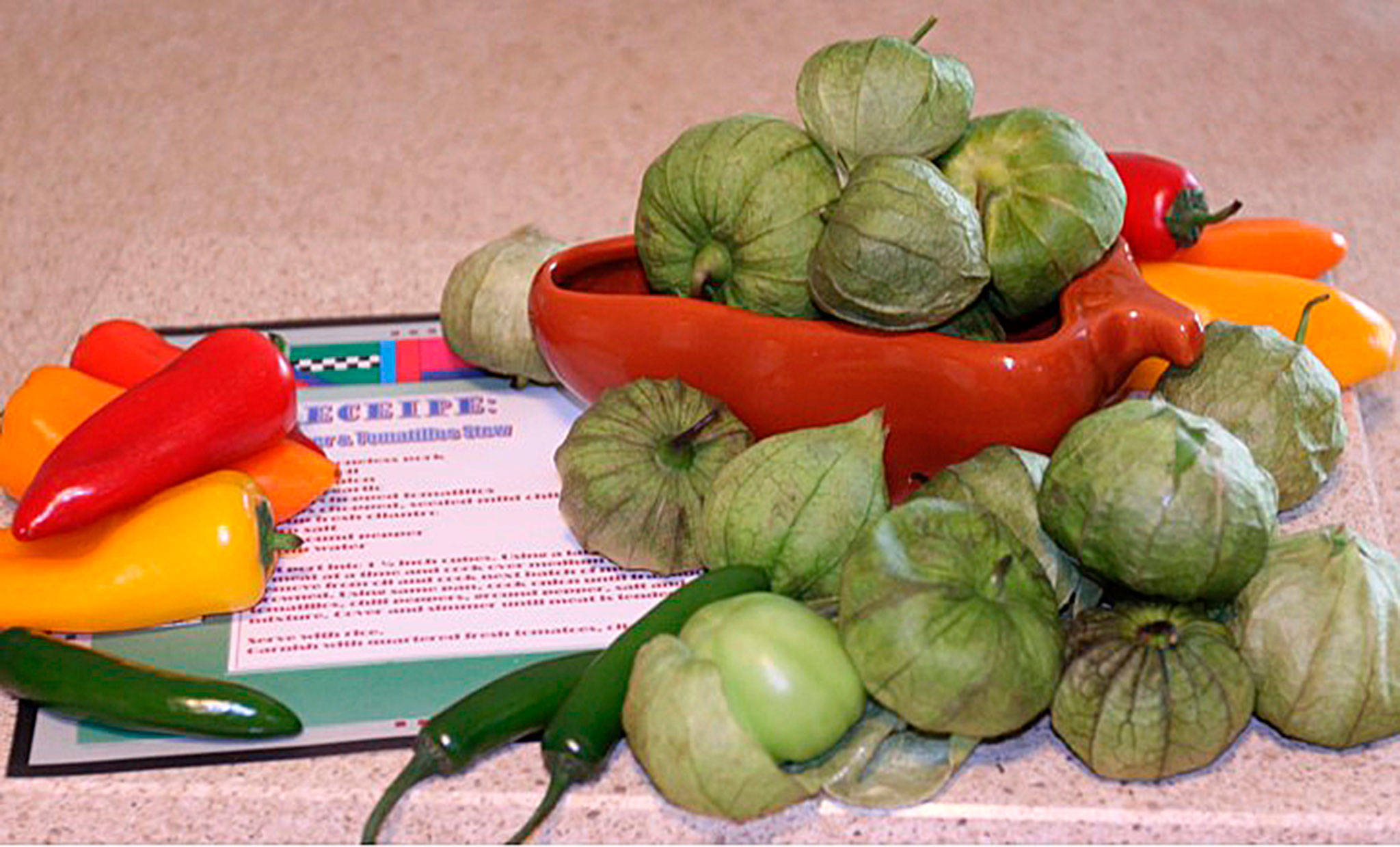by Judy English
Tomatillos are a staple in Mexican cooking and can become a star in your kitchen. They can be used raw or cooked, in a large variety of recipes, and be frozen for future use. The tomatillo (pronounced toe-mah-TEE-yo) is available in yellow, purple and green varieties.
Tomatillos prefer good drainage, soil pH of 6.0 to 7.0 and the sunniest spot in your garden. The more sun the better — fruit will mature faster with increased sun exposure. Tomatillos can be picked before they are fully mature, so they are a good choice for the Pacific Northwest garden. Plants can become a bit “rangy.” If support is needed, a tomato cage will do the job.
Remove husks and wipe the fruit dry before storing in a plastic bag in the refrigerator. To freeze, remove husks, wash and quarter.
Peppers power
Peppers come in many shapes and sizes ranging from bite-size to long-skinny or squatty-plump varieties. Colors include purple, yellow, red, orange and green.
The two basic kinds of peppers are mild sweet peppers and hot peppers. When selecting a variety, make sure you know the flavor characteristic and the “heat” level. Hot peppers range from mildly pungent to “set your mouth on fire” hot.
Cool temperatures impact the size and quantity of peppers a plant produces. Choose peppers that mature early or are designated for cooler or short-season growing environments.
Small-fruited varieties typically produce earlier and are more prolific than larger-fruit varieties. Peppers that produce ample vegetation and very few fruit are probably better suited to a warmer climate.
Start pepper seeds indoors or buy pre-started plants. Always use new seeds as old seeds rarely produce a plant that is the same as the parent.
Peppers grow best in highly organic, well-drained soil that has a pH of 5.5 to 7.0. Transplant into the garden in the first or second week of June after night temperatures have begun to warm.
If you plant both sweet peppers and hot peppers, label both the plant and the harvested produce. Inadvertently using a hot pepper in a recipe calling for a “sweet” or “mild” pepper can turn a tasty dish into a surprising and unpleasant experience.
When harvesting and using hot peppers, protect your skin by wearing gloves and protective goggles. The capsaicin in hot peppers can burn your skin and eyes.
The skin of the pepper is tender when raw but freezing will toughen the skin. Roast raw peppers under the broiler to remove the skin before freezing.
When tomatillos and peppers are plentiful in your garden, freeze them in the portions needed to make your favorite recipe and enjoy them throughout the year. Tomatillos and peppers also can be dehydrated or canned.
Learning with Clallam County Master Gardeners
In print and on the air:
KSQM (FM 91.5) — “The Garden Show” airs Friday at 6:40 p.m., repeats on Tuesdays at 11:40 a.m.
KONP (AM 1450 and FM 101.7) — “Garden Talk” airs the last Monday of the month from 1-2 p.m.
Sequim Gazette — “Get It Growing” garden column; weekly, April through October
Contact information
Clallam County Master Gardeners program coordinator: Lorrie Hamilton
By phone: 565-2679
By email: lhamilton@co.clallam.wa.us
Online: extension.wsu.edu/clallam/
Judy English is a WSU-certified Clallam County Master Gardener.


